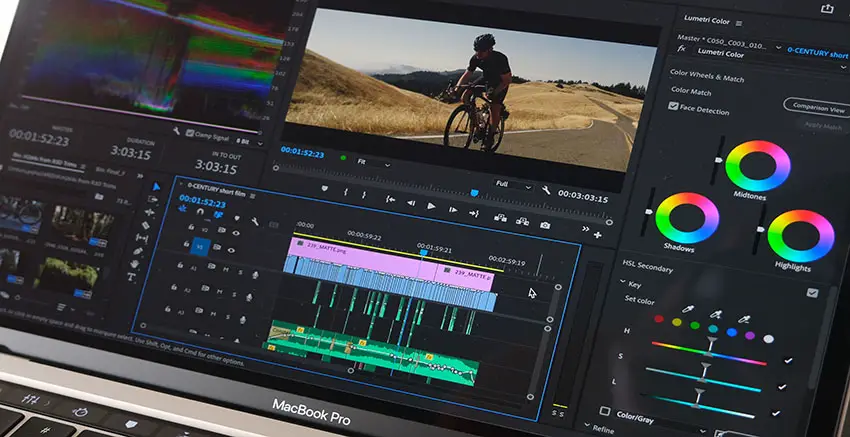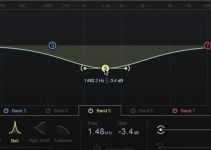The world is changing. But here at least I get to focus on the cinema world. It seems RED is once again poised to shake things up with a compact, (relatively) affordable cinema camera – the Komodo 6K.
It’s somewhat of a departure for RED as it is affordable and doesn’t actually need a slew of accessories just to start recording. With 6K Raw and a Super 35mm sensor, it’s looking to be a hit. How does this compare to the current crop of affordable large-sensor cinema cameras?
One such competitor is the Canon EOS C200. This was a surprise when it was released thanks to its ability to record DCI 4K in raw up to 60 fps. Filmmaker Griffin Conway got his hands on a RED Komodo and put it up against a C200, particularly when it comes to autofocus, dynamic range, and image quality.
If you are going to compare cameras, there’s always once good place to start: max image quality. Conway started off with 24p shooting, which allowed the RED Komodo to hit 6K while the C200 offers 4K.
To match exposure and quality he used the exact same EF-mount lens on both cameras. The C200 does have built-in NDs, so for the Komodo he used the Canon EF-to-RF Adapter with built-in variable ND filter.
The quickly edited footage looks damn good for both. Dynamic range and color were very similar. The actual color rendering was a bit different – Conway thinks the Komodo’s look with a little more native contrast and saturation is a bit more appealing.
It’s a very close comparison here, though you can’t forget the Komodo is 6K while the C200 is 4K. Also, the raw control RED provides seems to be much more advanced with ways to control all the particular ways things like highlight rolloff looks, which is a huge benefit.

Next up is 4K 60p recording. The Komodo has a disadvantage in that it has to crop about 1.3x to achieve 4K 60p. With Super 35mm sensors an extra crop can impact your lens selection.
As for performance, again the cameras are quite close with good dynamic range and noise control.
Overexposure is a huge struggle for digital cinema cameras, so Conway tested that as well by overexposing by 2 stops. By checking how the cameras handle the highlight roll-off you can see how it might perform in certain situations, like backlighting.
The shot for overexposure looks well controlled on both, but the cameras handle things quite differently. The C200 looks very natural, but the Komodo has a reddish bloom around the highlights that is stylish but could be very appealing if you like that look.
Conway points out that REDRAW has a lot more control over exposure in post, including detailed changes to highlight roll-off.
Now for the opposite test: underexposure by 3 stops. I think there is a clear winner here in the Komodo. After raising the exposure in post the Komodo image essentially looks no different than if you had raised the exposure in-camera with a bit more grain. The C200 falls apart with tons of unappealing noise. Arguably the C200 isn’t usable here.
Overexposure recovery in post showed a slight advantage for Canon. It seems to be a question of methodology in how the cameras work, with RED opting for more information in the shadows while Canon tries to save more information in the highlights. In both you tend to lose a bit on the other side.
Autofocus is one of the most interesting tests, especially since we haven’t seen this in RED cameras before. The Komodo uses the Canon RF mount, though for the moment only works with adapted EF lenses for AF. Canon, obviously, has been using EF lenses for a while and has their phenomenal Dual Pixel CMOS AF.
RED actually surprises here with decent tracking on a moving subject—in this case a person walking towards the camera. The camera is still in beta and not even widely available yet, so seeing it working even this well is great.
RED has said it will improve over time. It’s still no contest though, as the RED doesn’t have the advanced tracking options and settings. Canon’s Dual Pixel CMOS AF with Face Tracking and other settings is just really, really good.
So, who are the cameras for? Conway thinks the C200 is meant for the shooter that wants an easy, complete package for documentaries, corporate shoots, interviews, weddings, and the like. Image quality is good and things like AF can be a huge help.
The Komodo on the other hand is for users looking for the best image quality and control, at the expense of ease of use and nice-to-have features. Think controlled film sets, music videos, fashion shoots – things where you have time to be particular with each shot.
Again, this is a very early test of the Komodo and it looks super promising. Those not quite satisfied with current options like the C200 may find the Komodo to be exactly what they need. The ability to shoot 6K also gives it a bit of a future-proof edge. And it’s a RED!
[source: Griffin Conway]
Order Links:
- Canon EOS C200 Cinema Camera (B&H)
- Canon EF-EOS R Drop-In Filter Mount Adapter with Variable ND (B&H, Amazon)
- Canon EF 24-105mm f/4L IS II USM Lens (B&H, Amazon)
Disclaimer: As an Amazon Associate partner and participant in B&H and Adorama Affiliate programmes, we earn a small comission from each purchase made through the affiliate links listed above at no additional cost to you.


